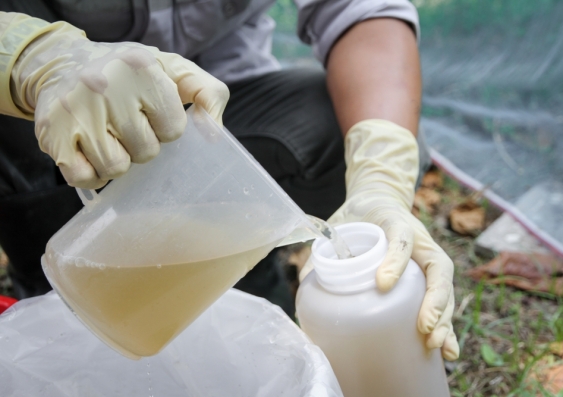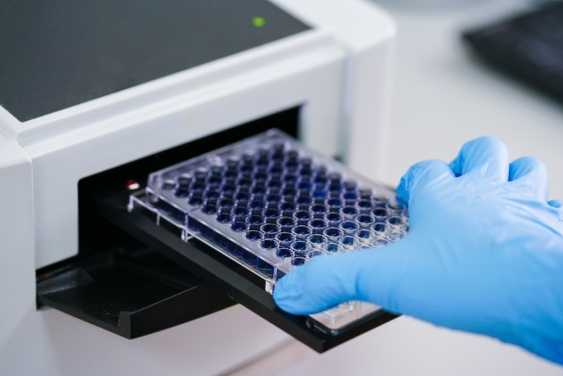New method improves detection of harmful microscopic parasites in water
UNSW Professor Ewa Goldys leads research that uses CRISPR technology to more quickly and easily identify potentially fatal Cryptosporidium microorganisms.
UNSW Professor Ewa Goldys leads research that uses CRISPR technology to more quickly and easily identify potentially fatal Cryptosporidium microorganisms.

UNSW engineers have identified a new simpler method to detect tiny microbes in water which cause significant health risks and potentially even death.
Research by Professor Ewa Goldys, from UNSW’s Graduate School of Biomedical Engineering, and her team shows that ultrasensitive CRISPR technology can identify the presence of Cryptosporidium parvum in samples on site and using simple equipment.
Cryptosporidium is a microscopic parasite that can cause serious gastrointestinal disorders, and is especially widespread in locations where water sources may be contaminated by animals, both wild and domestic. Long periods of drought followed by heavy rain, becoming ever more typical in Australia, often leads to increased contamination of our waterways.
The new technology also has the potential to be developed further to improve detection of other bacteria and viruses, including possible identification of COVID-19 in wastewater samples.
Until now, detecting Cryptosporidium most commonly requires the use of expensive laboratory equipment, specialised microscopes and skilled training to identify the microbe in a water sample.
But in a paper co-authored by Professor Goldys, and published in Water Research, a new method is proposed which is cheaper, easier to carry out and requires little or no special training to administer and analyse the results.
That is because the system produces a distinctive fluorescent glow in the water sample when Cryptosporidium is found.
The research shows how identification of even a single microorganism within a given sample is possible. This is important, given the fact that as little as two such microbes are believed to be capable of causing serious infection.
Prof. Goldys said: “This new method lowers the cost of water testing and makes it more broadly available. We hope to make water testing much faster, and much cheaper.

Professor Ewa Goldys
“That is a benefit to everybody, wherever they live in the world, because it makes the technology more widely accessible.
“In addition, we believe this technology could be applied to the detection of Covid-19, which currently takes up to 11 hours to get results from wastewater samples – much of which is often time spent transporting the sample to the lab where all the specialised equipment is located.
“Our system gives results for Cryptosporidium in just two-and-a-half hours and we hope this is a new technology that can be easily applied at the site where water samples are being taken.
“The aim is to get further funding for additional research into the way we may be able to adapt this for Covid-19 detection.”
The work by Prof. Goldys and her team – including Professor Graham Vesey, Yi Li, Fei Deng and Tim Hall – uses CRISPR technology that can detect specific proteins on the surface of the Cryptosporidium microbe (known as an oocyst) and then bind onto it.
When a fluorescent agent is added to the reaction mixture, which is then combined with water samples, the result is a clear signal which can be detected by a standard plate reader.

A simple plate reader can be used to detect the flourescent signal given off when CRISPR technology is used to detect specific proteins on the surface of the Cryptosporidium oocyst. Image from Shutterstock
These plate readers are suitable for large-scale screening of multiple samples simultaneously, thus making the detection process faster and more efficient.
The CRISPR/Cas12a-based system can produce results in around 2.5 hours, at a maximum sensitivity down to a single Cryptosporidium oocyst per millilitre.
“Although the pathogen can be very sparse in the water, it’s still very dangerous because ingesting just a few can make you sick,” Prof. Goldys says.
“The current system using microscopy is very tricky and also very time-consuming. This new method makes it quicker and easier.”